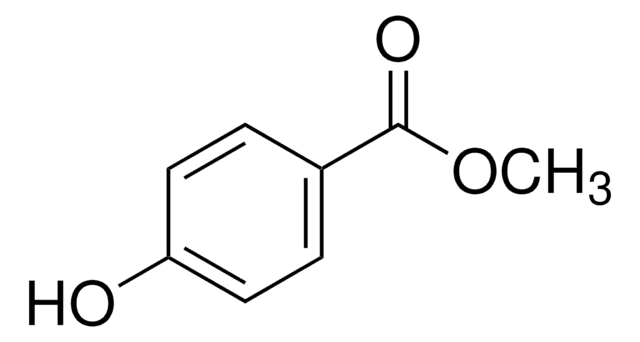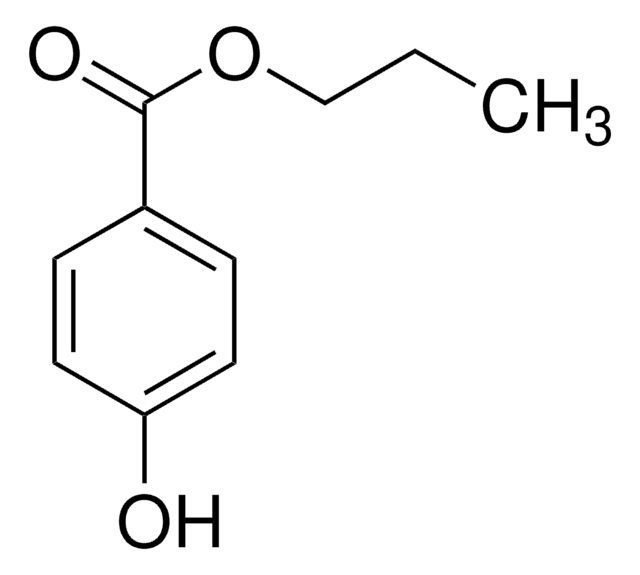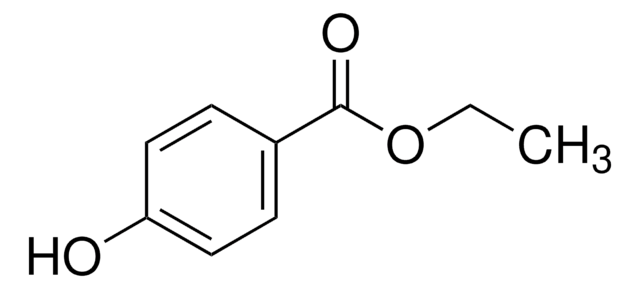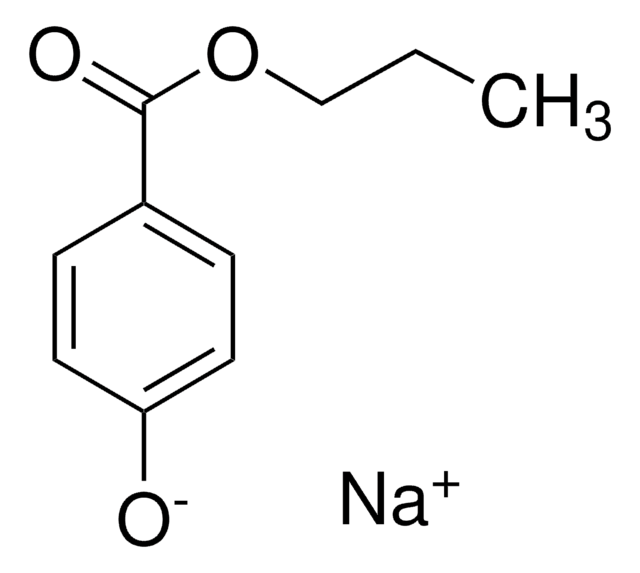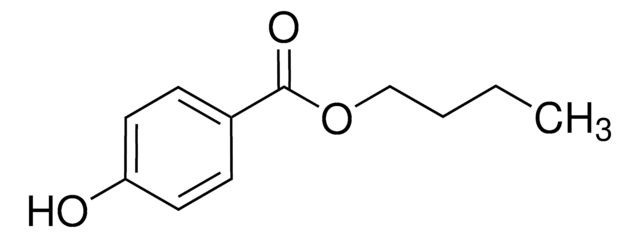M1650000
Methyl parahydroxybenzoate
European Pharmacopoeia (EP) Reference Standard
Synonym(s):
Methyl 4-hydroxybenzoate, p-Hydroxybenzoic acid methyl ester, Methyl paraben, NIPAGIN
About This Item
Recommended Products
grade
pharmaceutical primary standard
API family
parabens
manufacturer/tradename
EDQM
mp
125-128 °C (lit.)
application(s)
pharmaceutical (small molecule)
format
neat
SMILES string
COC(=O)c1ccc(O)cc1
InChI
1S/C8H8O3/c1-11-8(10)6-2-4-7(9)5-3-6/h2-5,9H,1H3
InChI key
LXCFILQKKLGQFO-UHFFFAOYSA-N
Looking for similar products? Visit Product Comparison Guide
General description
For further information and support please go to the website of the issuing Pharmacopoeia.
Application
Established for use according to European Pharmacopoeia for the preparation of the below-given solutions:
- Reference solutions (a) and (b) in the identification, testing for related substances, and assay of methyl parahydroxybenzoate and sodium methyl parahydroxybenzoate, according to the monographs 0409 and 1262
- Reference solution (c) for the testing of related substances in nifuroxazide using liquid chromatography (2.2.29), according to the monograph 1999
- Reference solution (b) in the identification of sodium ethyl parahydroxybenzoate using thin-layer chromatography (General text 2.2.27), according to the monograph 2134
Packaging
Other Notes
related product
Hazard Statements
Precautionary Statements
Hazard Classifications
Aquatic Chronic 2
WGK
WGK 1
Flash Point(F)
334.4 °F
Flash Point(C)
168 °C
Choose from one of the most recent versions:
Certificates of Analysis (COA)
Sorry, we don't have COAs for this product available online at this time.
If you need assistance, please contact Customer Support.
Already Own This Product?
Find documentation for the products that you have recently purchased in the Document Library.
Customers Also Viewed
Our team of scientists has experience in all areas of research including Life Science, Material Science, Chemical Synthesis, Chromatography, Analytical and many others.
Contact Technical Service